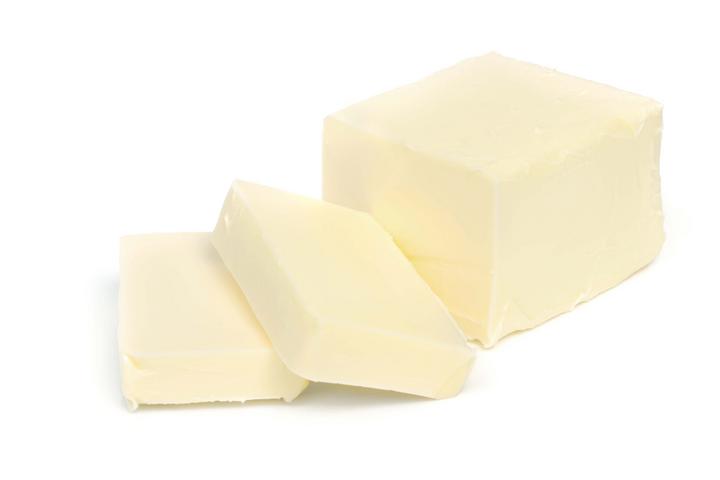Textured butter is a technological butter that overcomes texture differences throughout the seasons. Cattle feeding influences greatly milk composition in fatty acids. Grass feeding lowers the content of some fatty acids with higher melting points and increase other fatty acids with lower melting points. Winter butters have thereby higher melting points than spring butters. As a result butters have different textures throughout the seasons. For some operations, namely yeast dough and puff pastry dough, a winter butter texture is important in order to run smoothly during production. Textured butter overcomes these differences. Thanks to a mechanical process (scraped surface exchanger and resting unit), butter crystallisation is perfectly controlled giving to butters of all seasons the appropriate texture. In some cases this operation is not enough and the melting point must be corrected, this is referred to as fractionated butter.
Butter properties which are appreciated (spreadability or hardness) are related to variations in composition of saturated fatty acids and unsaturated fatty acids. Usually in summer cattle feed on grass and hay. They produce then some fatty acids from grass. These fatty acids are basically similar to those that can be found in oils. Butter as a result is soft at room temperature. It is said to be greasy (as for instance spring and summer butters from Normandy and Brittany). On the contrary, in winter cattle feed on silage. Diverse feedings make different fatty acids. These new fatty acids are solid at room temperature. Butter is then hard; it is said to be “dry”. A dry butter is constituted of triglycerides containing fatty acids with high melting point. A greasy butter is basically constituted of triglycerides containing fatty acids with low melting point.
Textured butter is the most used technological butter in French fancy pastry. It allows namely the manufacture of oven ready fancy pastry. Thanks to butter texturing techniques good quality pastry is possible all year long even out of the winter season when winter butter is not available.
The advantages of textured butter are numerous to meet your specific needs:
Extrusion / Smearing:
- No exudation during extrusion
- Smooth and homogenous butter
Sheeting / Laminating:
- Excellent plasticity
- Firm texture to provide a good dough consistency, that does not stick while laminating
- Regular and homogenous distribution
- Perfect impermeability between layers
Development / baking process:
- Important and regular pastry development
- Even pastry colour
- Butter flavour increase while cooking
Tourage butter (butter for rolling) is a butter whose plasticity and melting point allow an optimal quality of laminating. Its rheological and organoleptic qualities make it a product which allows an exceptional quality of puff pastry. These butters benefit from the craftmanship of Butter masters and therefore facilitate the preparation of yeast dough and flaky pastry. Plasticity and melting point have a direct impact on your pastry regarding crispness, volume and presence of air cells. Their plasticity and authentic taste make them a unique and essential product to successfully manufacture good quality puff pastry.
